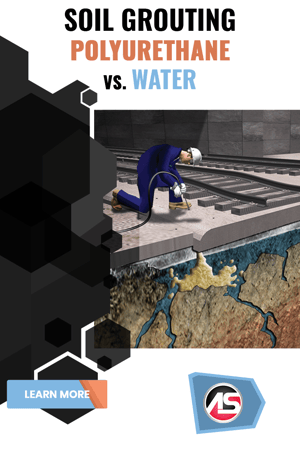

Not all two-component polyurethane lifting and stabilizing foams are specifically designed for wet environments. In most situations when you are injecting polyurethane foam into the ground, there is a high probability that the environment is going to be wet. You need to be confident that the foam will react and retain the desired properties in these wet environments. If the foam you are using is not specifically designed for wet environments, then you may be cheating yourself and your customer out of the best possible results.
All polyurethane foams are going to undergo a density change when introduced to water. This is precisely because the isocyanate (A component) in polyurethane reacts faster with water than it reacts with the polyol (B component). Some will undergo drastic changes and some minor changes. It is important to feel confident that the foam you are using will only undergo minor changes. The density of the foam is very important because density correlates to foam strength, and you are relying on that strength to support the structure you are lifting or the soil you are stabilizing.
All Alchemy-Spetec products are formulated to achieve minimum density changes when introduced to wet soil.


